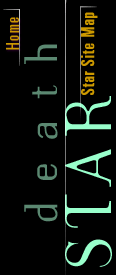 |
 |
|
A Self-Guided Tour of the Electromagnetic Spectrum
|
|

|
Ultraviolet
There are many sources of ultraviolet light in the universe—the sun is a prime example.
Though we can't see ultraviolet light, some animals can. Some insects, for example, can see ultraviolet patterns in flowers.
Ultraviolet radiation has some important uses. Because it can kill bacteria and viruses, it is used to sterilize objects such as medical instruments, the air used in operating rooms, and food containers.
Although ultraviolet radiation is not visible to our eyes, we do use it for artificial lighting. Fluorescent lights emit a bright white light, but what is generated within the long narrow tubes is mainly ultraviolet light. This ultraviolet light strikes the inside surface of the tube, which is coated with a phosphor powder. When the ultraviolet radiation strikes the phosphor, the coating emits light in the visible spectrum.
Viewing the sun in ultraviolet wavelengths allows astronomers to study its corona, or outermost atmosphere, as well as flares and mass ejections. The brightest areas in this image show the sun's hottest regions.
Next: X-rays
intro |
radio |
microwave |
infrared |
visible light |
ultraviolet |
x-ray |
gamma
One Astronomer's Universe |
A Bad Day in the Milky Way
Catalogue of the Cosmos |
Tour the Spectrum
Resources |
Transcript |
Site Map |
Death Star Home
Search |
Site Map |
Previously Featured |
Schedule |
Feedback |
Teachers |
Shop
Join Us/E-Mail |
About NOVA |
Editor's Picks |
Watch NOVAs online |
To print
PBS Online |
NOVA Online |
WGBH
© | Updated January 2002
|
|
|
|